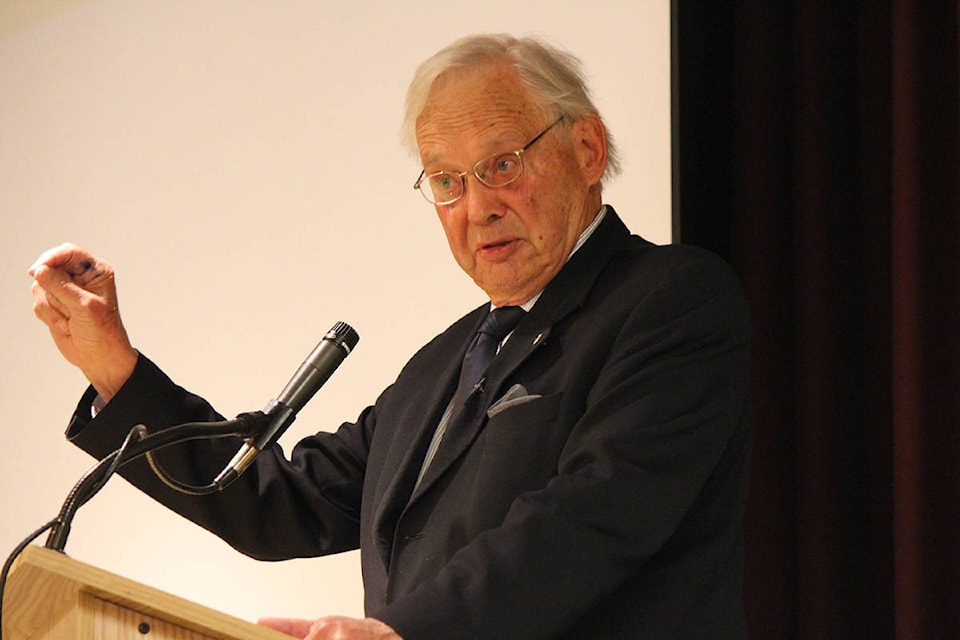Everywhere in the North, people are remarking on the life and death of Thomas Berger, who helped to protect the Northern environment and everything on it that the Dene and the Inuvialuit live on. Their land gives life. It’s not for sale.
The gratitude expressed over what Mr. Berger did for the people up here is huge. It also takes me to a similar situation for the Inuit in the east, to the conflict regarding a mining expansion proposal and the Inuit of the Qikiqtaaluk/Baffin region.
This time around, with recognized Inuit land claims in place, the process for conducting environmental impact reviews is done by holding public hearings, a process thereby created by the land claims agreement of Nunavut. Through that forum, the Nunavut Impact Review Board provides time and space for the different companies, people, organizations and groups involved to express their thoughts and present their reports and stance before a decision can be made to either build more infrastructure on traditional Inuit lands that would further impact them or to go with those that want to save their land and water and their wildlife that are part of these areas, including traditional caribou calving grounds on land and the belugas and narwhals at sea.
With the mine running since it began in 2014, the wildlife and their natural patterns and cycles have already been seriously affected, according to the traditional land users, stewards, hunters and beneficiaries of the area that have testified. Some of the lands are now covered with red dust in places, even far away from the mining site. The lakes and river are impacted too, including fish that the Inuit use for subsistence.
At the time of the Berger inquiry, these very similar concerns were raised over the course of 40 years by the people of the Western Arctic regarding the construction of a gas pipeline.
To compare, Mr. Berger in his final report to the federal government wrote:
“The construction of a gas pipeline and the establishment of an energy corridor will intensify oil and gas exploration activity all along the corridor. The cumulative impact of all these developments will bring immense and irreversible changes to the Mackenzie Valley and the Western Arctic.
“Given the uncertainties relating to design and construction, illustrated by the foregoing comments on frost heave and scheduling, and given the bearing they have on environmental impact and the enforcement of environmental standards, it seems to me unreasonable that the Government of Canada should give unqualified approval to a right of way or provide financial guarantees to the project without a convincing resolution of these concerns.
“There is a myth that terms and conditions that will protect the environment can be imposed, no matter how large a project is proposed. There is a feeling that, with enough studies and reports, and once enough evidence is accumulated, somehow all will be well. It is an assumption that implies the choice we intend to make. It is an assumption that does not hold in the North.
“It is often thought that, because of the immense geographic area of the North, construction of a gas pipeline or establishment of a corridor could not cause major damage to the land, the water or the wildlife. But within this vast area are tracts of land and water of limited size that are vital to the survival of whole populations of certain species of mammals, birds and fish at certain times of the year. Disturbance of such areas by industrial activities can have adverse biological effects that go far beyond the areas of impact. This concern with critical habitat and with critical life stages lies at the heart of my consideration of environmental issues.”
These are the same things many Inuit are saying today too. It seems the majority of the Inuit are not willing to live with the fate of this type of development for themselves, or their children. The traditional way of life from the lands and waters is respected, for it is an inheritance from their ancestors and they are the experts of their own lands.
The proposal by Baffinland is another worry to the Inuit who are already concerned with climate change as evidenced by dramatic sea ice changes and recently by the growing presence of the killer whales that now hunt for belugas and narwhals, among others.
Due to the presence of COVID-19 occurring during the public hearings in April 2021, the sessions were cancelled. Now we wait for the continuance of the hearings that, in the end, will eventually lead to a decision by the Department of the Crown-Indigenous Relations. Perhaps as Thomas Berger did for the Western Arctic Inuit and Dene that resulted in protecting their lands, the Inuit in Nunavut could also have a chance to cease further development on their lands. We wait and see.
Suzie Napayok-Short is an Inuk author, translator, interpreter and activist on issues related to Inuit traditions and language across the North. She grew up in Nunavut and lives in Yellowknife.
